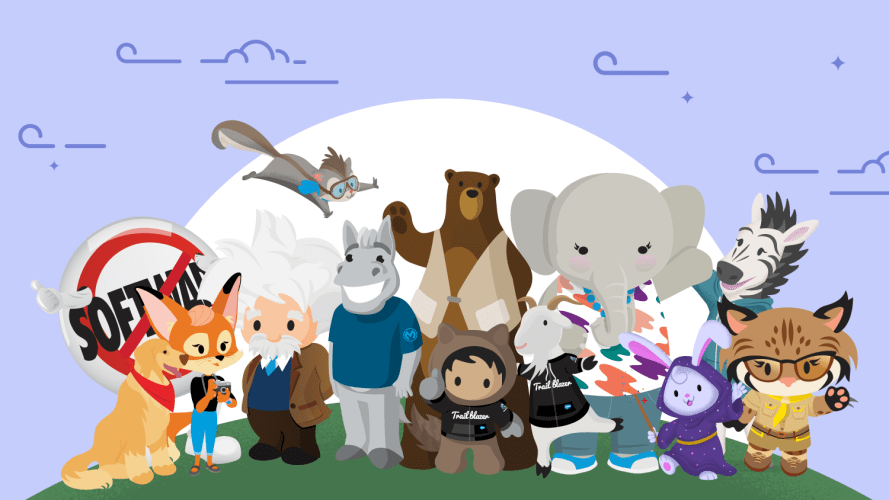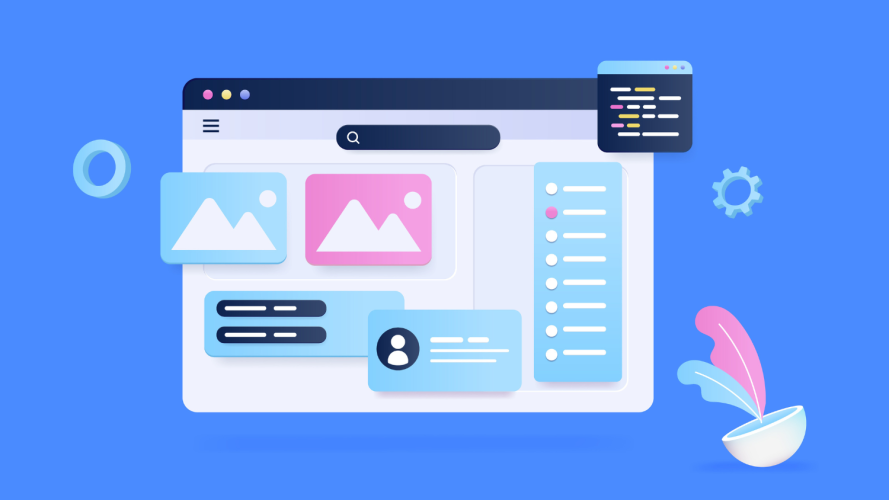What is AI in Government? How Technology is Reshaping Public Sector Services

Upskilling your workforce can deliver better constituent experiences and spur more efficient agency operations.

Nadia Hansen
The AI boom is here, which means it’s time to see how AI in government can make things run smoother for both organizations and constituents.
For government and public sector organizations, there are clear ways that AI can help make you more efficient and serve people in better ways, such as data processing, cyber security, and public planning, to name a few.
Public agencies have an opportunity to create awareness around the importance of AI in government. This AI boom means it’s a great time for government workers to gain new skills and secure their future. Gaining these in-demand AI skills will help employees to better serve the public — improving trust between the public and private sectors.
Is your government agency AI-ready?
Learn how several public sector agencies started their AI and digital transformation journeys and found success.



One of the biggest concerns around the emergence of this technology and the investments being made into it, however, is an AI skills crisis. A SAS survey of decision makers from major U.S. firms spanning nine sectors, including government, says 63% of respondents believe that they don’t have enough high-quality AI and machine learning resources.
That skills gap coupled with the full-speed-ahead approach by decision-makers in business and government is giving workers reason to worry.
In March 2023, investment bank Goldman Sachs predicted that AI could eventually replace 300 million full-time jobs globally and affect nearly one-fifth of employment – with a particular hit to jobs often considered automation-proof, such as administrative and legal professions.
But there will be jobs created — at what percentage those offset jobs displaced is the question. The World Economic Forum’s Future of Jobs Report says nearly 75% of surveyed companies expect to adopt AI, with 50% of organizations believing it will result in job growth, and 25% thinking it will create job losses.
That’s why it’s so important, as AI takes on an increasing amount of lower-level tasks, that workers affected by this change gain the skills to shift into more enterprising work. There’s a great opportunity for your organization to embrace AI in government, but first, you need to make sure your employees have the proper training and you have the secure foundational data for AI to work with.
Data modernization is the first step to setting up your organization for an AI optimized future. It’s also an area in which workers can upskill and transition into as AI shifts the human-based workflow away from lower-level tasks.
AI applications in government
AI has the power to vastly improve government operations to more effectively meet the needs of its citizens. The use cases are virtually endless — from traffic management to healthcare delivery to processing the endless forms and paperwork that notoriously clog nearly every government agency.
Health departments are using AI on everything from expediting drug trials to detecting and preventing the next pandemic.
Public safety agencies are deploying AI to support personnel, streamline operations, and analyze large data sets.
The list goes on: Identifying infrastructure deficiencies and the most effective and efficient fixes; more effective ways to deploy safety nets while also detecting fraud; self-service options for resident queries; streamlining backlogged court systems.
The wide array of AI in government applications creates a gigantic need for digital-ready workers. But one of the biggest obstacles standing in the way of public agencies fully embracing and quickly adopting this technology is a lack of AI and data management capabilities within their own workforce.
Government workers have not been trained on the data science and AI skills necessary to handle the massive scale of citizen data and build state-of-the-art AI models that will ultimately benefit the public.
How do we effectively ensure workers don’t find themselves lost, or worse, left behind with so much changing around us so quickly? And how do we give workers the appropriate tools that ensure equity, accessibility and safety? This is especially important for public sector organizations that have the added responsibility of maintaining some of the most stringent security standards in the world.
Proper education and training around using AI responsibly is the next step for organizations, helping the public sector better serve its people.
AI in government examples
Now that you know the importance of AI education, it’s time to see how other organizations around the world are handling this opportunity.
Finland launched Elements of AI in 2018, free online courses designed to introduce AI basics to nonspecialists in the public. The courses include self-study resources, interactive content and task-based work that teaches concepts, usage methods and limitations of the technology. The Finnish government pledged to educate at least 1 percent of its population — a target that was quickly met and surpassed. The courses are now available in more than 20 languages, and 1 million people around the globe have completed it.
Similarly, AI Singapore launched the AI for Everyone program, a national initiative managed by the government to equip individuals and organizations with the skills to use AI and machine learning for social good. It offers AI courses and workshops, and funding and support for AI projects that address social change.
In the U.S., legislation that would create an AI training program for federal supervisors and management officials is also making its way through Congress. It’s intended to provide AI use guidance to federal leaders. This helps them ensure the risks and rewards of using the technology are properly weighed against the agency missions and the communities they serve.
Benefits of upskilling the workforce for AI in government
Employees possessing the right skills for the time are invaluable to a functioning government. The employee experience is directly linked to the customer experience, as we found that only 18% of people surveyed believe the customer experience is prioritized in their interactions with government.
Meanwhile, we also discovered that 73% of the workforce don’t feel “very equipped” with the resources needed to learn the digital skills required to succeed now. Yet it’s clear that equipping public sector workers with the skills necessary to leverage AI empowers them to deliver transformational experiences to the public.
Meaning, there’s a huge opportunity to upskill public sector workers to meet the opportunities presented by AI in government. This not only means security for workers in an unsettling time, but also better experiences for the population they serve. Ultimately, this is a chance to build more trust, ensuring that the public sector is doing everything it can to best serve the population.
The future of AI in government
One of the main ways you can get your employees and agency ready for AI is through modernizing and unifying your data. It’s important to keep in mind that AI tools are only as effective as the data they draw from and the people guiding the technology.
When your data is connected and unified, you can unlock the true potential of AI and automation, fueled by real-time insights. This will help you build experiences that not only advance your organization’s mission, but build trust with the people you serve.
The rise of the Chief Data Officer is an indicator of the importance of this function and the specialized skill sets that will set successful organizations apart. Not only do these roles require data management, but also the critical tasks of ensuring the ethical and equitable use of data-driven technologies.
Trust is an integral part of AI in government, meaning data integrity and security are critical. That creates an opening for public sector organizations to establish foundational components — analyzing and standardizing large data sets, implementing enhanced security measures, and innovative data modeling — to set them up for an AI-focused future.
The future of digital service
Get insights from thousands of people on the global trends impacting customer and government interactions and the public sector’s approach to digital transformation.


























